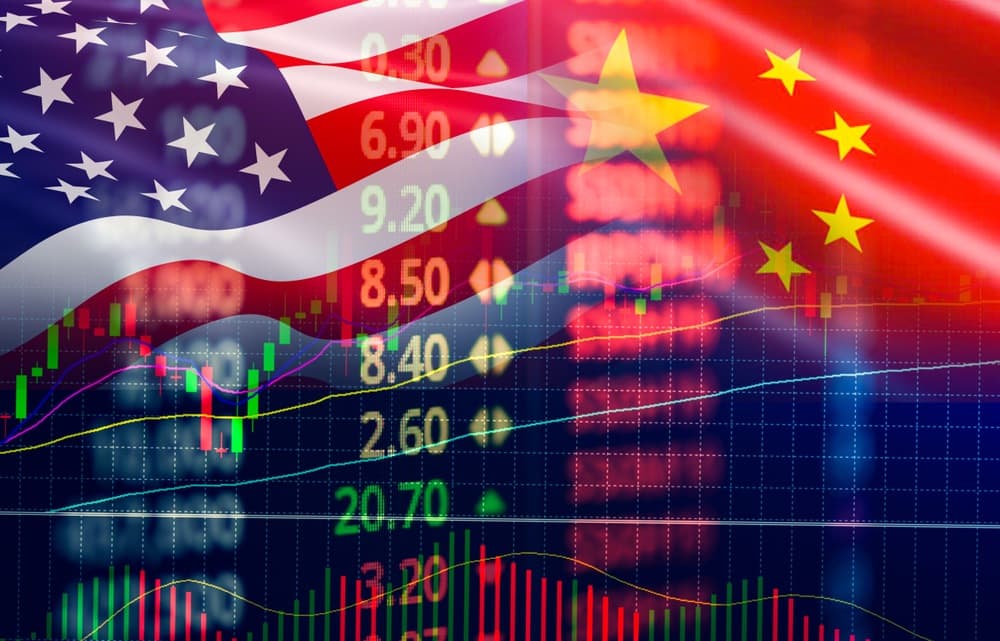
We’re hyper aware this morning that Wall Street is in the throes of an AI bubble.
The numbers are startling: the Shiller CAPE ratio has climbed above 34, its highest level since the dot-com mania, while margin debt among retail investors is pushing toward records last seen in late 2021.
According to Bloomberg, the top 10 stocks now make up over 41% of the S&P 500 — a concentration “unprecedented in modern market history.”
Even cautious voices are sounding the alarm. “This is a very precarious setup,” warns Rob Arnott of Research Affiliates. “When so much of the market’s value is tied up in a handful of names, history suggests it doesn’t end well.”
The Magnificent 7 alone accounts for 35% of the S&P’s weighting, making the index look less like a diversified basket of U.S. enterprises and more like a leveraged bet on Nvidia, Apple, and Microsoft.
 AI Mania and the Fed’s Push
AI Mania and the Fed’s Push
The Fed’s pivot into rate cuts is adding fuel.
Last Wednesday’s quarter-point trim was presented as a “risk management cut,” but in practice, it kicks $10 trillion parked in money market funds into more speculative channels.
Much of that capital is eyeing AI as the engine of the “new economy reset.” CoreWeave, Intel, and Nvidia dominate headlines not just for technology breakthroughs, but because the speculative capital needs a home.
As one strategist told Financial Times, “AI has become the vessel into which liquidity is being poured. Whether it can carry the weight is another question entirely.”
 Gold Goes Mainstream
Gold Goes Mainstream
Against this froth, gold is gaining legitimacy as a mainstream portfolio asset. JPMorgan has quietly shifted away from the old 60/40 orthodoxy, publishing forecasts that see gold rising to $4,000 an ounce by mid-2026 — and perhaps $6,000 by the decade’s end.
The bank cites a weaker dollar, persistent geopolitical risk, and central bank diversification as tailwinds.
“Gold has moved from a tactical hedge to a strategic allocation,” JPMorgan’s private bank wrote this summer. That sentiment is showing up in flows. Bullion deliveries, ETF inflows, and even central bank purchases are running at their strongest pace in decades.
Meanwhile, the junior miners — often the last leg of a metals bull market — are stirring.
The Wall Street Journal reported last week that Canadian and Australian explorers have seen double-digit gains since July, even as their larger peers plateau.
Silver, too, has surged past $44, with traders whispering about a retest of its $48 high.
 Politics at the Edge
Politics at the Edge
Geopolitics only complicates the picture. President Trump meets Argentina’s Javier Milei this week, hoping to calm markets ahead of $9.5 billion in looming debt payments.
The peso has been in freefall, and Milei’s radical libertarian program now faces its first true market test.
At the UN in New York, Canada, the UK, and Australia recognized a Palestinian state, joining 147 member nations already on record.
U.S. officials criticized the move, and Israeli Prime Minister Benjamin Netanyahu dismissed it outright: “It’s not going to happen.” Still, the coordinated step signals a broadening break between Washington and its traditional allies.
 Reading the Signals
Reading the Signals
So, the ever-present question: what to do with your money?
Acknowledge the bubble, but don’t get trapped in it.
Speculative froth can run longer than logic allows, but concentration risk is real.
“We may take a breather here in the next few days given how overextended the market is in the short term,” notes Portfolio Director Andrew Packer, who just made a trade betting on a market pullback over the next few weeks in the Grey Swan Trading Fraternity.
Andrew adds, “I don’t think we’ve seen the final top for markets yet – but it’s now or never for a pause before a year-end rally.”
Diversify where incentives still make sense — commodities, select value plays, and yes, even gold.
Gold’s “gradual rise,” as JPMorgan frames it, is your friend if you’re reallocating at this moment. But don’t treat it as a slam dunk. Remember: after 1980, gold holders waited 25 years to recover in real terms.
Balance, ballast, and patience remain the investor’s best tools.
~Addison
P.S.: Don’t miss this Thursday’s Grey Swan Live! at 2 p.m. ET. Andrew will be joined by Shad Marquitz to dig into commodities. With gold over $3,700, silver breaking out, copper near all-time highs, and uranium stirring, the question isn’t whether to own them, but how.
Click here to sign up if you’re not a member yet.
If you have any questions for us about the market, send them our way now to: Feedback@GreySwanFraternity.




